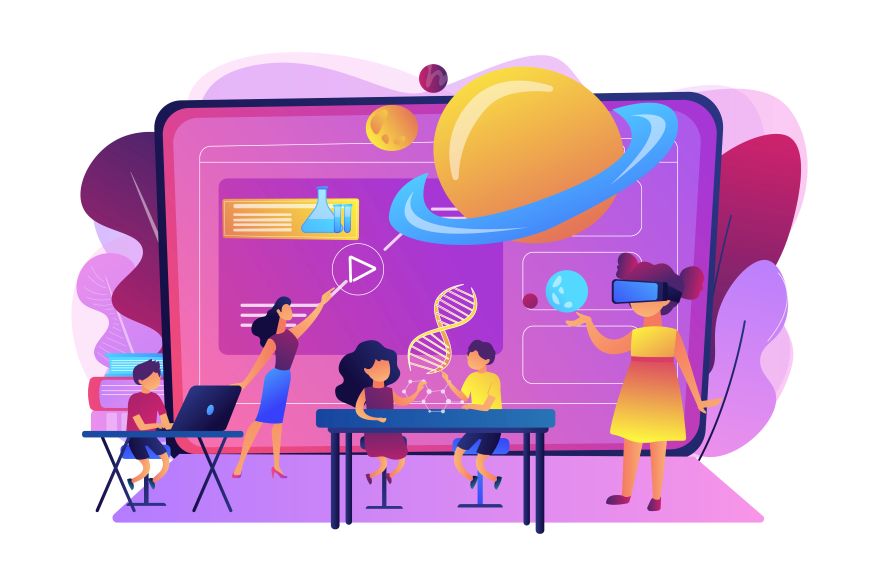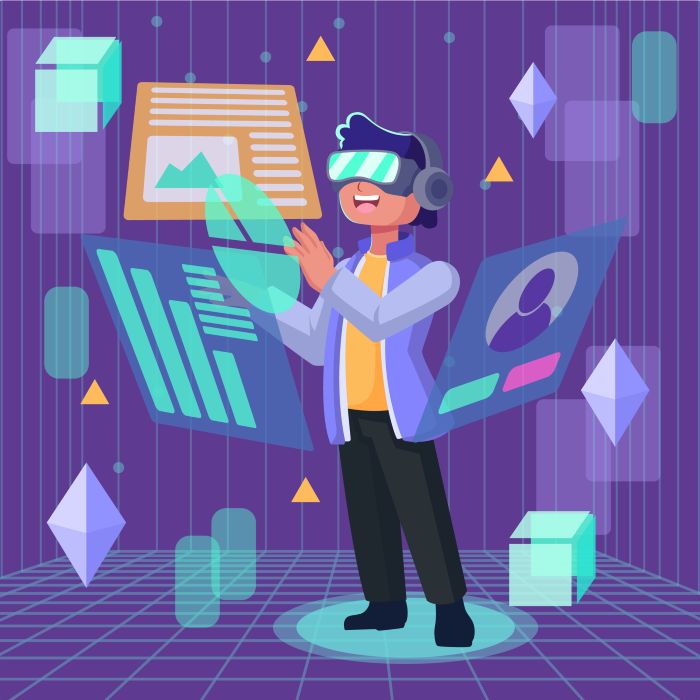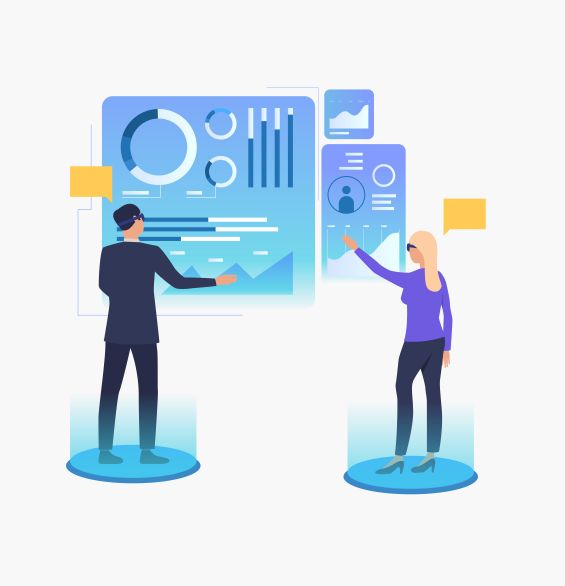
Staying updated on new STEM conference trends keeps you prepared. New technology like Artificial Intelligence and Virtual Reality is changing events. Social changes also push for more inclusion and accessibility.
Big trends shaping STEM conferences in 2025 are:
- Using AI to create personalized learning for attendees.
- Focusing on teamwork across different technologies to solve problems.
- Using virtual and augmented reality for fun, hands-on demos.
- Making events welcoming and easy to join for everyone.
- Teaching digital skills and cybersecurity to handle modern issues.
These trends show how STEM conferences are always changing and improving learning and work experiences.
Key Takeaways
- AI helps you pick sessions you’ll enjoy, making learning fun.
- Working with different fields sparks ideas and solves problems for real life.
- Virtual and augmented reality make STEM lessons cooler and easier to remember.
- STEM events include everyone, offering help for all backgrounds and needs.
- Learning tech skills, like cybersecurity, prepares you for future challenges.
Integration of AI and Machine Learning
AI for Personalized STEM Conference Experiences
Artificial intelligence (AI) is changing how STEM conferences work. AI tools, like AI-Matchmaking from 6Connex, study attendee profiles. They suggest sessions and events based on your interests. This makes your experience better and helps you meet the right people. For example, if you like renewable energy, AI shows you related sessions and experts.
AI-driven personalization is making a big impact. About 68% of attendees like AI networking tips. Around 75% of planners say AI boosts engagement and satisfaction. These stats show how AI makes STEM conferences more fun and interactive.
AI also spots trends in attendee data. It helps organizers predict what you need and plan better. If many people like a topic, organizers add sessions about it. Tools like the AI Content Hub give you content that fits your interests and activity level.
Machine Learning in Event Planning and Analytics
Machine learning (ML) is improving how STEM events are planned. It helps organizers study lots of data to make smart choices. For example, ML can adjust ticket prices and boost sales by 30%. It also predicts trends, increasing event profits by 25%.
People tapping on futuristic virtual screens with diagrams. Future, finance, cyberspace concept. Vector illustration can be used for topics like business, technology,and virtual reality
ML saves planners time by automating tasks like scheduling. This can save up to 200 hours each year. With more time, planners can focus on making events better for you. About 87% of planners say ML makes them more productive, leading to smoother events.
The use of AI and ML in events is growing fast. In 2023, it was worth $1.8 billion. By 2033, it may grow to $14.2 billion, with a yearly growth rate of 22.9%. These numbers show how AI and ML are shaping the future of STEM conferences.

Interdisciplinary Collaboration in STEM Conferences
Connecting Different STEM Fields
Working together across STEM fields is changing problem-solving. By mixing ideas from different areas, new solutions are found. For example, engineers and biologists can create cool things like medical tools or special materials.
Teamwork between fields boosts creativity by sharing new ideas. It helps you think in fresh ways and question old ideas. Studies show hands-on projects with mixed fields help you learn better. They also make it easier to connect what you learn to real-life problems. This way, you’re ready for challenges outside the classroom.
STEM conferences now focus more on linking fields. They use shared tools or ideas, called “boundary objects,” to bring people together. These tools help everyone understand each other and work as a team. By joining these activities, you help build a culture of teamwork and new ideas.
Promoting Research and Networking Across Fields
STEM conferences are great places to meet people from other fields. Talking to them can spark new ideas and projects. For example, a biologist and computer expert might team up to study genetic data with smart programs.
Research shows teamwork across fields leads to fresh ideas. It also helps you see problems in new ways and avoid missing important details. Meeting people from other areas expands your knowledge and opens new doors.
Many conferences now have group projects to encourage teamwork. These projects let you solve real problems with others from different fields. They improve your thinking skills and prepare you for future jobs. By joining these, you help push STEM ideas forward.
Virtual and Augmented Reality in STEM Events
Making STEM Demos Better with VR

Virtual reality (VR) is changing how STEM demos work. It puts you in a 3D world to learn better. For example, tools like Onlabs help in biology labs. You can see cells or chemical reactions up close. VR also helps medical students learn infection control. It even improves welding skills for jobs.
VR makes learning more fun and engaging. A study compared VR users to others using old methods. VR users had an 85% participation rate. The other group had only 60%. VR users also stayed focused and enjoyed learning more.
These numbers show how VR makes STEM demos exciting. With VR, you can explore real-like simulations. This makes learning fun and easy to remember.
AR for Fun and Hands-On Learning
Augmented reality (AR) mixes digital stuff with the real world. It adds cool features to STEM lessons to keep you interested. AR can turn lessons into games, making learning fun. This helps you remember things better.
AR also helps you work with others. Imagine solving physics problems with friends using AR. You can move virtual objects together to learn teamwork. AR also lets you practice real-world STEM tasks. You can design circuits or do virtual experiments.
AR has many benefits. It makes learning fun and boosts memory. It also gives you real-world skills. By using AR, STEM events become more exciting and useful for your future.
Inclusivity and Accessibility in STEM Conferences
Making Events Welcoming for Everyone
Inclusive STEM conferences make sure everyone feels welcome. Organizers plan events to include people from all backgrounds. Programs like NSF INCLUDES help students from different groups grow their skills. CS for All gives computer science chances to students across the U.S. These programs show why making STEM open to everyone is important. As a result, they highlight the need for inclusivity.
To support diversity, organizers implement various helpful strategies. For example, they provide scholarships, mentors, and learning support. Specifically, scholarships enable students with limited financial resources to attend events. Meanwhile, mentors offer guidance and foster a welcoming environment. Moreover, studies show that these initiatives help underrepresented groups feel more included.
Still, there are problems to fix. According to reports from iEMBER, leadership roles often lack diversity. Additionally, many groups do not prioritize fairness and inclusion. Therefore, addressing these issues can make STEM events more equitable and ensure that everyone has a chance to share ideas.
Using Technology to Remove Barriers
Technology plays a key role in making STEM events more accessible. For instance, virtual platforms allow people to attend from home, reducing travel costs. Additionally, tools like live captions and sign language support those with hearing challenges. Meanwhile, augmented reality provides engaging, hands-on experiences for those who can’t attend in person.
Programs like InGenIOus effectively show how technology can make education more accessible. Similarly, virtual labs and online classes enable students to learn without needing costly tools or travel. Consequently, these innovations help students from all backgrounds pursue STEM careers.
To improve access, events can adopt easy-to-use designs. For instance, features like larger text and adjustable colors help people see better. Moreover, by leveraging technology, STEM events can become more inclusive, welcoming everyone regardless of their challenges or limitations.
Digital Competency and Cybersecurity in STEM Events
Keeping Virtual STEM Conferences Safe from Cyber Threats
As more STEM events go online, cybersecurity is very important. However, Virtual platforms can face risks like hacking, fake emails, or stolen data. Knowing these dangers helps you stay safe and protect your information.
The need for better security is growing worldwide:
- Experts say global security spending will hit $210 billion in 2024.
- By 2028, this could grow to $314 billion.
- As online crimes continue to rise, it becomes even more important to strengthen protections for digital events.
Event planners now use smart tools to enhance conference security. For example, they implement two-step logins, secret codes, and live threat monitoring. As a result, these measures protect your data and make events safer for learning and networking. Also, by learning about cybersecurity, you can contribute to a safer online world.
Learning Digital Skills
STEM events in 2025 especially focus on teaching you key tech skills. Consequently, these skills prepare you to tackle today’s challenges and succeed in a tech-driven world. Moreover, many programs provide hands-on lessons and expert guidance to enhance learning.
For example, mentors work with you to solve real-world problems.
By joining programs, you learn to use tech tools confidently. These skills make your conference time better and prepare you for STEM jobs in the future.
The future of STEM conferences depends on embracing new ideas and technology. As a result, these innovations help events remain useful and relevant as the world evolves. Not only that, groups that prioritize STEM skills stay ahead by tackling tough problems and advancing technology.
| Key Point | Explanation |
|---|---|
| Value of STEM Knowledge | Using STEM skills helps make smart choices and create new ideas. |
| Flexibility and Growth | Companies with STEM workers handle changes in the market better. |
| Advanced Tools | STEM experts use tools to plan better and predict trends. |
Keeping up with trends like AI, inclusion, and cybersecurity has made STEM events stronger. For example:
- As remote work continues to grow, the need for cloud computing skills has increased significantly.
- Governments are actively funding STEM programs in order to train students and prepare them for the future.
- Meanwhile, ongoing efforts for fairness are helping close the gender gap in tech jobs..
“Innovation can be tricky, but good measures connect it to results, helping guide decisions.” – Singh
As someone involved in STEM events, you help shape their future. By following these trends, you support a smarter, fairer, and more tech-savvy STEM world.
FAQ
Why should you attend STEM conferences in 2025?
STEM conferences not only teach you about new trends but also introduce cool tech like AI. Additionally, you can meet experts, explore VR tools, and develop teamwork skills, all of which prepare you for future jobs.
How does AI make STEM conferences better?
AI suggests sessions and people to meet based on your likes. It also helps planners improve events by studying what attendees enjoy.
Are VR and AR tools too pricey for events?
No, many VR and AR tools are now cheap and easy to use. Moreover,apps like Onlabs make learning fun and affordable for all event sizes.
How do STEM conferences include everyone?
They offer scholarships, mentors, and technology like captions to provide support. Additionally, virtual events allow people to join from anywhere without the need to travel.
What digital skills are useful for STEM events?
Learn cybersecurity, teamwork, and data tools. By doing so, you can stay safe online while also collaborating effectively with others at tech events.